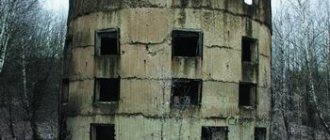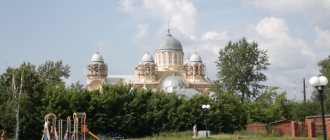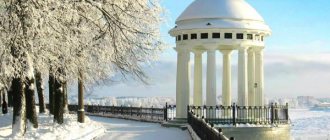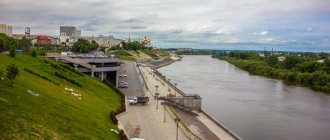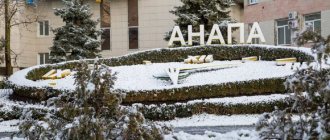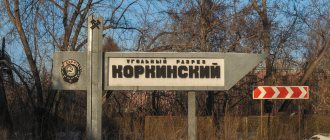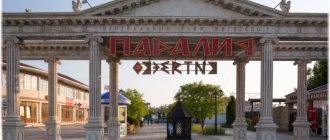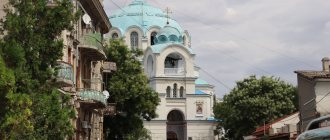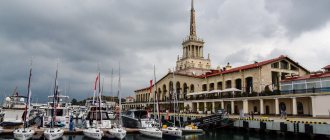Finishing another working day at a nuclear power plant, I thought: “Shouldn’t I have dinner in Lithuania today?” Why not? From my hotel in the city center to Lithuanian Panyamune - 20 minutes at a leisurely pace: along a beautiful pedestrian street with historical buildings of Prussian architecture, then across the Queen Louise Bridge. I'm not somewhere in Europe where there are no borders. I'm in the Russian city of Sovetsk. And such a walk is commonplace for local residents. The second largest city in the Kaliningrad region, the northeastern gateway to the European Union - Sovetsk, also known as Tilsit (until 1945), was considered the most beautiful and cozy city in East Prussia. The cobbled streets retain the magical charm of 19th century German architecture.
A little history
The first mention of Tilsit in the chronicles of the Teutonic Order occurred in 1385, and the right to be a city was granted to it by Duke Albrecht in 1552. Already in the XVII-XVIII centuries. Russian and foreign embassies travel through Tilsit. It was here that the Treaty of Tilsit was signed between Russia and France (Alexander I and Napoleon) on July 7, 1807, and between Prussia and France on July 9. In 1845, a cheese factory was opened near Tilsit, producing the famous “Tilsiter”. Later the recipe was transported to Switzerland. At the beginning of the 20th century, the Queen Louise Bridge was built across the Memel (Neman) River , which has enormous trade, economic and political significance. Prince Friedrich Wilhelm of Prussia and his wife attended its opening. On October 22, 1944, the bridge was blown up by German engineers to prevent the advance of Soviet troops. Restored three years later. In 1945, Soviet troops entered Tilsit. The Königsberg region becomes Kaliningrad, and the city of Tilsit becomes Soviet. Thus, the history of this small city is full of events on an international scale.
Sovetsk
Video: Sovetsk from above
Basic moments
In world history, the city of Sovetsk is known as the place where the Tilsit Peace Agreement was signed in 1807 between the Russian Empire and Napoleonic France. This treaty significantly changed the fate of many European countries. Tilsit also became famous for the fact that the recipe for the famous Tilsiter cheese, which gained popularity among gourmets all over the world, was invented here.
Recently, local authorities have been making a lot of efforts to develop tourism in the historical cities of the Kaliningrad region. Among the locations included in the national tourism project “Imperial Route” was the former Tilsit, because at one time the Russian sovereigns Peter I and Alexander I, the French emperor Napoleon Bonaparte, and Prussian and German crowned persons visited here. In modern Sovetsk, the ruins of the medieval citadel of the Teutonic Order, the Queen Louise Bridge, and Prussian houses of the 19th - first half of the 20th centuries have been preserved, most of which are in need of repair.
As part of the cross-border cooperation program with the European Union, primarily with neighboring Lithuania, plans have been outlined for the restoration of cultural sites and historical buildings, and the construction of a modern cultural and leisure center has been completed. Over the past two decades, new churches belonging to different denominations have appeared in Sovetsk, and many monuments have been restored. The city has museums, theaters, cinemas, and small hotels offering decent service.
Victory Street in Sovetsk
History of Sovetsk
Historians consider the predecessor of Sovetsk to be a fortified settlement of one of the ancient Prussian tribes, built in the 6th century. German archaeologists excavated the remains of early medieval buildings and an extensive burial ground on the western outskirts of the city in the early 1930s.
From historical chronicles it is known that military engineers of the Teutonic Order erected the first floating bridge across the Neman here in 1313, and in 1410 they built a stone castle near the mouth of the Tilse River, which flows into the Neman. The city of Tilsit arose near the walls of the citadel. The Tilze (Tylzha) River gave it its name.
Trade flourished in the port village and fairs were held. Timber was a popular commodity - ship timber was floated along the rivers into the harbor. In 1511, the Grand Master of the Order ordered the first hotel to be built here. On November 2, 1552, the Prussian Duke Albrecht of Brandenburg signed a charter elevating the sprawling village to city status. This event is considered the founding date of Tilsit.
At the beginning of the 18th century, the region was depopulated after a plague epidemic. The king invited settlers from other countries to East Prussia. Mennonite refugees from Holland and Switzerland came to Tilsit to escape religious conflicts. Among them were experienced cheese makers who established the production of local Tilsiter cheese, which became widely known in Europe.
At the end of the 19th century, a Swiss cheese maker who visited East Prussia brought the Tilsiter recipe home. Several varieties of this delicious cheese are produced in the Alpine country to this day under the Tilsiter Switzerland brand. It is interesting that this family business is continued by the descendants of that same traveler cheesemaker. The cheese wheels are covered with a dark burgundy crust. The surface of the elite Alpen Tilsiter variety is rubbed with white wine infused with spices. Their own Tilsit cheese is also made in Germany, Poland, Russia, Ukraine and even in Australia. Everywhere the recipe is slightly different. Gourmets have placed Tilsiter in the top 20 best cheeses in the world.
The provincial town of Tilsit suddenly entered world history in 1807, when the army of Napoleon Bonaparte defeated Prussian troops and the 40,000-strong army of the Russian Empire sent by Tsar Alexander I to help the allied Prussia. The battle took place near the city of Friedland, 43 km southeast of Konigsberg. In a fierce battle, Russian soldiers behaved so courageously that a new insignia for bravery was established in Russia, which later became known as the soldier's St. George's Cross.
After the victorious battle, the French emperor arrived in Tilsit, where he met with the Russian autocrat. During the negotiations, the monarchs signed a document that reshaped Prussia, which had almost disappeared from the map of Europe - the Tilsit Peace Treaty. The negotiations were also attended by the King of Prussia, Frederick William III, and his wife, Queen Louise of Mecklenburg. The charming crowned beauty managed to convince Napoleon to preserve the statehood of Prussia, which had lost a significant part of its lands. This event is captured in the painting of a contemporary, French painter Nicolas Gosse, “The Tilsit Rendezvous.” The canvas depicts Napoleon, politely taking off his cocked hat. He holds the hand of the queen, who bows her head slightly. Nearby, the Prussian king straightened up impassively; The blond Russian emperor looks at Napoleon with a slight smile. Louise went down in the history of the kingdom as a true guardian angel of the country and remained in the national memory for a long time.
Historical city center (1930)
In the 19th century, Tilsit became more beautiful: church bell towers rose in the squares, the streets were lined with beautifully decorated multi-story residential buildings and public buildings. Hotels, restaurants received guests, and a drama theater operated. A Tilsit cheese factory operated in the city and high-quality beer was produced.
In 1865, a railway line leading through Königsberg to Berlin was built to Tilsit. Ten years later, the banks of the Neman were connected by a railway bridge, the tracks were continued to Memel (Klaipeda). By the beginning of the 20th century, a passenger river port and a cargo harbor operated in Tilsit, and a tram ran along the streets. In the 1920s an airfield was built here. It served as a base for regional passenger flights and also provided intermediate refueling facilities for long-haul flights. Here, among other things, planes landed on flights Moscow - Berlin, Leningrad - Koenigsberg - Berlin.
During World War II, the local airfield was converted into a Luftwaffe military air base. When Hitler's Wehrmacht crossed the border of the USSR in June 1941, within a few hours the city was subjected to a massive raid by Soviet bombers.
Soviet soldiers entered the dilapidated Tilsit in January 1945. In July 1946, the city received a symbolic name - “Sovetsk”. At the same time, the German population was deported to Germany, and the first trains with immigrants from different regions of the USSR arrived in the city. They could not be called “new residents”: there was practically nowhere to live in the bombed city, approximately three-quarters of the streets lay in ruins.
The main efforts of workers and engineers were concentrated on the restoration of industrial structures. The destroyed residential areas were not restored, but were dismantled into bricks. Construction materials, which were in short supply at that time, were sent for the reconstruction of buildings in Leningrad, Minsk and other affected cities in the western regions of the country. Today, the preserved Prussian-German heritage seems to be a serious capital capable of turning Sovetsk into an attractive historical and cultural center.
Geography and climate
The border city of Sovetsk is located on the Lower Neman Plain, 120 km northeast of Kaliningrad, at the confluence of the Tylzha River with the Neman. Sovetsk has a population of 38,517 (2021) and has the status of a city of regional significance. There are no other settlements in the Soviet urban district. The nearest Russian cities outside the district are the regional centers of Neman (7 km to the southeast) and Slavsk (7 km to the southwest).
On the opposite northern bank of the Neman River, along which the border with Lithuania passes, is the city of Panyamune. From Sovetsk the Queen Louise Bridge leads across the river to it. There is a border checkpoint at the bridge crossing. Panyamune is the smallest town in Lithuania, with only 265 people living there. Until 1946, it was part of the city limits of Tilsit as a district beyond the river.
Although there are two rivers flowing in Sovetsk, you won’t be able to swim in them. There is an abandoned 100-meter city beach on the left bank of the Tylzha River. Currently it is not developed; the coast is overgrown with bushes and grass. Swimming in the river is prohibited. The ban was imposed by the regional Rospotrebnadzor: bacteria dangerous to health were found in the water. The soil on the beach is also contaminated; the content of toxic zinc in the sand is exceeded. The closest beach resort to Sovetsk is Zelenogradsk. The distance between cities is 142 km.
Sovetsk has a humid continental climate. In summer the city is quite cool, the air temperature fluctuates between +16…+20 °C. Only occasionally does the air temperature rise to +25…+30 °C. Autumn here is warm and rainy. Winters are mild, snowy, the average temperature in January-February is –3…–2 °C. There are short-term arctic cyclones that significantly lower air temperatures. During the extreme frost for the region, -33 °C was recorded.
Sights of Sovetsk
The statue of a knight on the facade of the
Sovetsk building, which is predicted to have a happy tourist future, combines features of the Prussian, Soviet and modern eras in its architectural appearance. In the post-war period, the city was built up with featureless residential buildings. Today they habitually coexist with dilapidated Prussian houses of the 19th – first half of the 20th centuries, requiring urgent repairs. Only in recent years have modern buildings with a strong architectural identity begun to appear here. These include, for example, cultural.
According to the recollections of contemporaries, after the war, the surviving churches, bell towers, and ancient fortifications were dismantled brick by brick. For obvious reasons, German cultural, historical and architectural monuments were ruthlessly and vindictively demolished at that time. Thus, a beautiful sculpture of the Prussian Queen Louise was destroyed, a monument to the outstanding German poet of the 19th century Maximilian von Scheckendorff, born in Tilsit, and other “ideologically alien” monuments were destroyed. Many beautiful buildings, which today await restoration, have been preserved only because they were used as housing for immigrants from different parts of the USSR.
Villa Franka
Müller-Stahl House
Queen Louise Theater building
Among the dull buildings of Soviet times, you can unexpectedly find an ancient German church left without a roof, a luxurious baroque building of the Queen Louise Theater, Villa Franca with an unusual decor in the style of northern mannerism, a picturesque mansion that once belonged to a Masonic lodge.
Tram-monument in Sovetsk
Among the already restored buildings, a former apartment building, located on the pedestrian Pobeda Street, the main walking artery of Sovetsk, shines. Its façade is decorated with a stone sculpture of a knight of impressive size, balconies with wrought-iron grilles, mascarons, and other spectacular details. On the same street you can see a monument to the Tilsit tram. It was installed in 2012. On the windows of the old red carriage there are enlarged photographs of pre-war Tilsit and a banner with a brief history of the local tram that ran around the city from 1901 to 1944. Nearby rises a cast-iron overhead contact pole, the rails are lined with stone paving stones.
On Iskra Street, on the site of the destroyed Church of the Resurrection of Mary, the Catholic Church of the Resurrection of Christ with a high hipped bell tower now flaunts. It was erected in 2000 with funds from the Lithuanian Catholic community. The five-domed Orthodox church, consecrated in 2007 in the name of the Three Saints (Kaliningradskoye Shosse, 10), is clearly visible from all corners of the city. It was built in the Russian-Byzantine style. The temple has three chapels - Basil the Great, John Chrysostom and Gregory the Theologian.
Monument to Queen Louise in Jakobsruhe Park
In 2014, the neglected Jakobsruhe Historical Park was put in order. At the same time, a restored monument to Queen Louise appeared here. The original 8-meter white marble monument adorned the central park alley from 1900 to 1945. It was created by the famous Berlin sculptor Gustav Eberlein. The statue served as Tilsit’s calling card; its images were reproduced on postcards and in tourist guides. A copy of the monument was made by St. Petersburg sculptors Pavel Ignatiev and Denis Prasolov. Now the elegant sculpture of the queen is once again a symbol of the city and its tourist attraction.
The drawbridge across the Neman, opened in 1907, is also associated with the name of Queen Louise. Its length was 416 m, the structure was supported by three steel arches. The entrance to the bridge from Tilsit is decorated with a monumental portal in the Baroque style, echoing the architecture of the German church that towered on the coastal Market Square. Today, the Queen Louise Bridge is one of the main attractions of Sovetsk.
At the end of 1944, when the advancing Soviet troops entered the territory of East Prussia, German sappers blew up the spans of the bridge. However, the monumental entrance portal with towers survived, although it lost many decorative elements. The elegant arched structures that supported the bridge deck have not been preserved. Subsequently, the crossing was hastily rebuilt using wooden beams, and in the 1960s, concrete slabs supported by numerous piles were laid across the river. Today, the portal of the Queen Louise Bridge is called the gateway to Europe: the bridge serves as a border crossing to neighboring Lithuania.
Bridge over the Neman
The city has preserved three ancient water towers of original architecture, built of durable brick. A two-tier square tower built in 1912 rises on Nekrasova Street, 4-A. The round conical tower on Timiryazev Street was erected in 1898. Another round tower is located on Pervomaiskaya Street, 4. It was built in 1916, near the railway tracks, and was intended to serve steam locomotives. All towers are functioning properly to this day, they are declared historical monuments and look quite presentable.
Entertainment
During the warm season in Sovetsk, it will be pleasant to stroll along the restored ancient alleys of the Jakobsruhe Park. One of its attractions is the former Tingplatz, built in the 30s of the last century. This concert venue has been reconstructed. A triangular tent canopy was erected over the stage, and new benches for spectators were installed in the open-air amphitheater. Now the Tingplatz is called the Green Theater. On fine days of the summer season, dance groups and orchestras perform here, and city festivals are held.
Jakobsruhe Park
In the evening, you can visit the youth Tilsit Theater, located in a recently restored historical building on Teatralnaya Street, 5. There is a small and cozy auditorium with 250 seats, the repertoire includes performances for children and adults. You can often see theater troupes from other Russian cities on stage. The theater box office is open daily from 13:00 to 19:00, on Sunday – from 10:00 to 13:00. Day off is Monday.
It’s worth looking at the poster for the Parus cultural and leisure center on Pobeda Street. This modern building is the result of a successful reconstruction of a typical cinema built in the mid-70s. The center opened in 2016. The facades were unrecognizably updated, and the latest sound equipment was installed in the hall. There are performances by pop artists, concerts, and hobby clubs.
Museum of Military Equipment in Sovetsk
In 2014, an open-air museum of military equipment appeared on Druzhby Street. The site contains used tanks, infantry fighting vehicles, artillery pieces, and a Mi-8 transport helicopter. Nearby there is an alley with a memorial to soldiers who died in the line of international duty in Afghanistan and Ethiopia, as well as during the military conflict in Chechnya.
It will be interesting to look into the city museum, located in a restored building on Pobedy Street, 34. The exhibition is dedicated to the most significant events in the centuries-old history of Tilsit, reflecting the years of the First and Second World Wars. A separate room is dedicated to the post-war restoration of Sovetsk, the life of the city within the USSR. The museum doors are open daily from 10:00 to 18:00, on weekends – until 17:00. The entrance ticket costs 60 rubles.
Purchases
You will find the best selection of souvenirs on the counters of the specialized gift shop Solo, located on Smolenskaya Street, 8. Tourists usually buy artistic items made of amber and jewelry with sunstones. Gifts can also be picked up at the Golden Comet cosmetics salon on Pobedy Street, 44.
The extensive Central Market, designed for 1000 retail places, is located on Gagarin Street, 14. Previously, the Tilsit Market Square was located here. Here today they sell agricultural products, sausages, meat, fish, seasonal vegetables and fruits. A significant part of the territory is occupied by rows of clothing bazaars. You can find antiques on the flea market shelves.
High-quality clothing from the manufacturer is sold in the company store of the Baltic Line clothing factory, located next to the market (Gagarina St., 12). Clothes, shoes and everyday goods are presented in the shopping center on Revolyutsii Street, 1. A good selection of products is offered by the Baltika supermarket (Pobedy Street, 18).
Cafes and restaurants
Among the best culinary establishments in Sovetsk is the Italian cuisine cafe "Cipolone", located in the vaulted hall of an ancient building on Pobeda Street, 40. It offers many types of pizza, the menu includes salads, first and second courses, drinks, desserts. Here you should try a hodgepodge of deli meats with olives and lemon (180 rubles), cream soups of mushrooms, pumpkin, broccoli (120-170 rubles), spaghetti with Parmesan and bacon (260 rubles). The chef's signature dishes are Tuscan-style pork medallions (350 rubles), beef stewed with prunes and walnuts (460 rubles), salmon fried in sesame breading (620 rubles). Desserts, for example, apple strudel with cinnamon, honey cake or the signature Cipollone sponge cake, cost from 130 rubles.
Cafe "Prussia" in Sovetsk
The Prussia cafe (54-A Iskra St.) is also popular in Sovetsk. The dining room is located in a specially built wooden pavilion. The interior is decorated with old photographs of Tilsit from the first half of the 20th century. In summer you can grab a table on the covered veranda. Parking is available for guest cars. The menu includes dishes of European cuisine, the price for main items is from 250 to 500 rubles.
In the top three is the café-confectionery “Izyuminka Tilsit”, located in the park on Lenina Street, 3. There is a large selection of cakes, pastries, and ice cream. The menu also includes hot dishes at reasonable prices.
The Rossiya restaurant, specializing in Russian and European cuisine, awaits guests on the central square of Sovetsk. There are several halls open here, there are separate rooms for small companies. The interiors are decorated pretentiously: the decor includes gilding, mirrors in bronze frames, and heavy velvet curtains. The tables are set with expensive dishes and crystal. The price range on the menu is 120-800 rubles. The establishment is open from 11:00 to 24:00.
Where to stay
The choice of hotels in Sovetsk is small. The 3* Rossiya Hotel is located in a three-story building on Lunacharskogo Street, 2. The five-story standard building was erected in the mid-1970s. There are 121 rooms with standard furnishings, a TV, a refrigerator, and a bathroom. Guests can enjoy a restaurant and a lounge bar where karaoke evenings are held. There is a spa with massage services. There is a gift shop in the lobby. The hotel has parking, a business center with conference rooms, and rooms for business meetings. Free Wi-Fi is available, but tourists note that the network does not work well. The cost of living is 2087-3166 rubles per day. Breakfast in the restaurant is served buffet style.
The new Hercules 3* hotel is located on Pushkin Street, 3-A. There is a restaurant and a bar on the terrace. The rooms are neat, the service is friendly. Wi-Fi works great here. The cost of daily accommodation is 2235-3175 rubles.
The cozy guest house "Makhaon" was built on Alexander Nevsky Street, 2-B. The rooms are equipped with minibars, TVs, and modern furniture. The bathrooms are equipped with new equipment. The cost of living is from 1500 rubles. Breakfast included.
You can stay inexpensively at the Express mini-hotel on Pervomaiskaya Street, 8. The rooms have refrigerators and electric kettles. Meals can be prepared in the shared kitchen. There is a grocery store nearby, and within a 10-minute walk, on Shkolnaya Street, 3, there is the Mama Mia pizzeria. By the way, from here you can order pizza and other food delivered to your room through the website or by phone from 11:00 to 23:00. For an overnight stay at the Express Hotel you need to pay from 937 rubles.
Booking.com
Transport
Public transport in Sovetsk is represented only by buses. There are 5 routes along the city streets. They all pass through the train station. There are also several private taxi services operating in Sovetsk.
How to get there
There are several options for the 120-kilometer journey from Kaliningrad to Sovetsk. The most convenient of them is to travel by express bus (routes No. 600E and 601E). Transport departs several times a day from the pavilion of the Southern Bus Station (Zheleznodorozhnaya St., 7). Travel time – 1 hour 50 minutes.
Regular bus No. 523 goes to Sovetsk with stops in roadside settlements. It travels longer - 2 hours 40 minutes. In addition, intercity buses pass through Sovetsk. Among them are No. 516, heading to Krasnoznamensk, No. 543, going to Neman. Tickets cost about 300 rubles.
A commuter train runs daily from the railway station of the regional center to Sovetsk. The only flight is at 18:20. The train takes 2 hours 15 minutes, a ticket will cost 225 rubles.
Kaliningrad taxi services charge from 2,500 rubles for a trip to Sovetsk. If necessary, you can order a transfer by minibus. This service will cost from 7,200 rubles.
From the present
The Queen Louise Bridge is a bridge across time. A very beautiful architectural structure. From our side it’s a masterpiece, from Lithuania’s side it’s just a bridge.
The current Tilsit Classical Gymnasium , which is almost 430 years old. Architectural monument. The current building was built in 1900.
Tram-monument - a tram car produced in 1933 as a reminder of the Tilsit tram movement.
Mansion of the merchant Franz Frank (1888).
Tilsit Theater – Kaliningrad Regional Theater for Young Spectators “Youth”. First opened in 1893.
The moose sculpture is an ancient German sculpture of a grenadier-sized moose, a symbol of East Prussia. On New Year's Day he is harnessed to a sleigh, and in the summer he is surrounded by flower arrangements.
Evangelical Lutheran Church of the Cross (1911) is a historical building in Sovetsk, one of the city’s landmarks. In the past - a Lutheran church, now the building of the former church houses retail and industrial premises.
Connoisseurs should definitely visit the Museum of History and the Museum of Local Lore . There you will find interesting exhibits from the times of East Prussia to the present day.
Former Tilsit public school (1906). Currently there is a boarding school here.
Ragnitsky castle and clock tower (Neman - 5 km from Sovetsk) are the ruins of a castle of Gothic architecture. It was erected in 1397–1408.
Mennonite church in Ragnit (Neman 1853). Mennonites are one of the varieties of Protestants.
The skeleton of a water tower.
A sad memory - many mansions contain traces of bullets. Local residents do not deliberately close them up.
Routes on the map of Sovetsk. Transport infrastructure
You don’t need to peer at a satellite map of Sovetsk to see that the city is cut up and down by roads and highways. The length of roads is over 100.5 km, the length of railway tracks is 17 km. There are also federal highways in the city (length over 13 km). The main transport “arteries” of Sovetsk:
- Riga-Tilsit highway - since 1836;
- Sovetsk station is the main railway junction at the address: st. Vokzalnaya 1. Provides communication with Lithuania, Neman, Kaliningrad Railway, etc.;
- The Gvardeysk-Neman highway stretches all the way to the Lithuanian border;
- Highway A216 - the motorway is part of the European road network E77;
- The Dubki-Rambinas checkpoint is being built outside of Sovetsk, designed to solve problems with transit vehicles.
Passengers are transported by buses (5 routes) and minibuses (one route). There are both intracity and intercity and international routes. Bus stations carry passengers in all directions - Kaliningrad, Vilnius, Tallinn, etc.
Nuances
The city has a difficult employment situation. Construction of the Baltic NPP has been frozen. Unfortunately, there are no other large enough enterprises that could provide jobs for the population. Perhaps this is also why at any time of the day you will see many people of all ages walking on the streets of the city. And, perhaps, in this regard, you should not walk too late through deserted streets and parks.
Ekaterina Voroshilova. “Working with IT products involves constant travel. Business trips for me are not only work, but also a valuable opportunity to visit various parts of our big country. At some point you realize how many interesting things you would never have seen or learned if chance hadn’t led you to places you’d never even heard the names of before. Every city, big or small, has its own unique characteristics, good people and amazing places that you want to return to again and again. Without these trips, life would be measured and calm, but not so interesting!“
Sovetsk on the map of Russia: geography, nature and climate
The city of Sovetsk is located near the confluence of two fairly large rivers - Neman and Tylzha . On the border with the Republic of Lithuania, 118 km from Kaliningrad. In the Kaliningrad region, this settlement has the northernmost location. Its geographical location has one amazing feature. The administrative centers of the Slavsky and Nemansky districts adjacent to Sovetsk are located at a distance of 7 km from it.
The proximity of rivers and the northern location influenced the weather and climatic conditions in the city. The maritime climate here gives way to continental and vice versa, which affects mild and warm winters, cool and pleasant summers. The hottest months with the most sunshine are August and July. In other months, the sky over the city is almost completely covered with clouds. There are no more than 35 clear days a year. Spring is also unusual here for Russia. April and March are characterized by winter-like cold weather, but already from the first days of May the heat begins. But the autumn cold will have to wait a long time. Autumn and spring come slowly in these latitudes.
Under favorable climatic conditions, high humidity prevails in the city, especially in early spring and autumn. But this circumstance also played into the hands of the city. Due to its humidity and abundance of moisture and warmth, Sovetsk is considered a garden city. Parks and flower beds are the main natural asset of the city.
